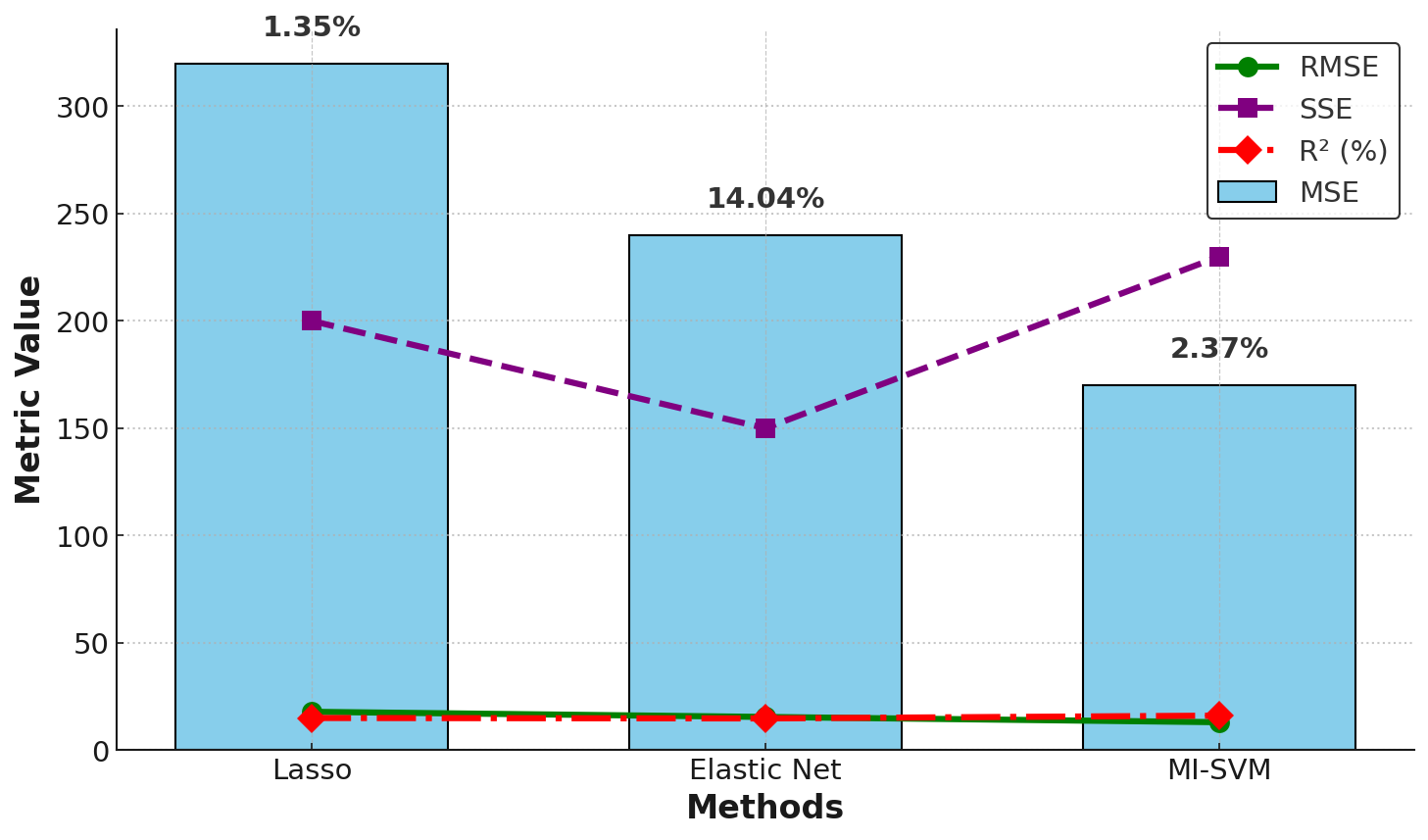Evaluating feature selection methods in a hybrid Weibull Freund-Cox proportional hazards model for renal cell carcinoma
Keywords:
Renal Cell Carcinoma (RCC), Weibull-Freund-Cox Proportional Hazards Model, Feature selection, Lasso regression, MI-SVMAbstract
This paper reports a feature selection comparison between Lasso, Elastic Net, and Mutual Information-Support Vector Machine (MI-SVM) that are based on a hybrid Weibull-Freund-Cox Proportional Hazards (WFCPH) model when it is used with renal cell carcinoma (RCC) data. The purpose is to determine which genes are dominant in RCC and evaluate the degree of efficiency of each method. Lasso, which performs rigorous selection for features, obtained quite a small set of genes, and the advantage was made in the simplicity and interpretability of the classifier. Still, the models had the lowest predictive ability. Elastic Net ‘averted’ some difficulties of Lasso combined with Ridge regression and selected more or less different genes for better fitting of the model. MI-SVM was the optimal procedure for this task, considering the number of features chosen and the performances obtained, with the highest R2 and the lowest MSE. The study provides valuable information on which approach to use in survival analysis using the WFCPH model by contrasting the advantages and disadvantages of each approach covered.

Published
How to Cite
Issue
Section
Copyright (c) 2025 Shaymaa Mohammed Ahmed, Majid Khan Majahar Ali, Arshad Hameed Hasan

This work is licensed under a Creative Commons Attribution 4.0 International License.






